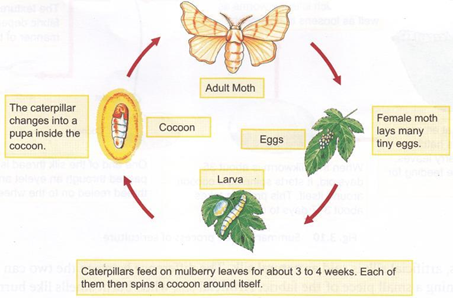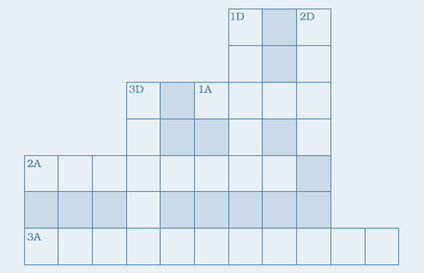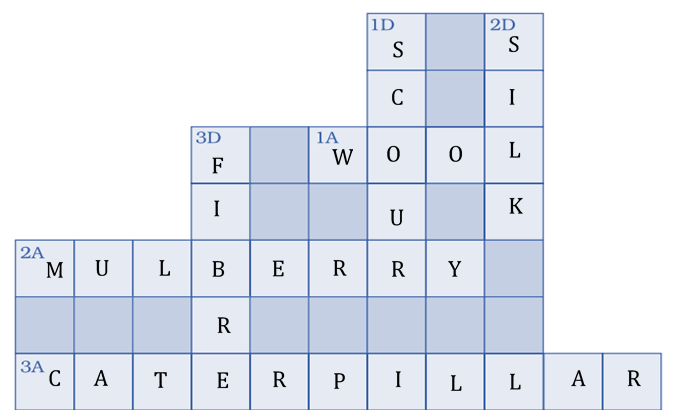NCERT Solutions for Class 7 Science Chapter 3 Fibre to Fabric
NCERT Solutions for CBSE Class 7 Science Chapter 3 Fibre to Fabric are given below. These solutions help students to clear their doubts and to obtain good marks in final exam. Class 7 Science NCERT questions and answers provided in this article are strictly based on the CBSE syllabus and curriculum.
Class 7 Science Chapter 3 Fibre to Fabric NCERT Solutions
Class 7 NCERT Solutions for Science Chapter 3 includes all the intext and exercise questions. All these questions are solved by experts with a detailed explanation that will help students complete their assignments and homework.
EXERCISES
Question 1: You must be familiar with the following nursery rhymes:
(i) ‘Baa baa black sheep, have you any Wool.’
(ii) ‘Mary had a little lamb, whose fleece was white as snow.’
Answer the following:
(a) Which parts of the black sheep have wool?
(b) What is meant by the white fleece of the lamb?
Answer: (a) The fine and soft under-hair that grows close to the skin of the sheep have wool.
(b) White fleece of lamb means the colour of the fleece of lamb is white. The natural fleece of sheep and goats is black, brown or white.
Question 2: The silkworm is (a) a caterpillar, (b) a larva. Choose the correct option.
(i) a
(ii) b
(iii) both a and b
(iv) neither a nor b.
Answer: (iii) both a and b
Question 3: Which of the following does not yield wool?
(i) Yak
(ii) Camel
(iii) Goat
(iv) Woolly dog
Answer: (iv) Woolly dog
Question 4: What is meant by the following terms?
(i) Rearing
(ii) Shearing
(iii) Sericulture
Answer: (i) Rearing: The process of keeping, feeding, breeding and medical care of useful animals is called rearing of animals. These animals produce one or more useful products for human beings.
(ii) Shearing: The process of removing the fleece of the sheep alongwith thin layer of skin is called shearing.
(iii) Sericulture: The rearing of silkworms for obtaining silk is called sericulture.
Or
(i) Rearing: It is raising and taking care of livestock (e.g. cows, buffaloes, goats etc.); for commercial purposes. These animals are fed, provided shelters and are bredfor better yield like milk, meat, wool etc. For example, Sheep are reared mainly for the wool. They are mainly reared in areas with low rainfall. Reared sheep eat grass and leaves. They are also fed on a mixture of pulses, corn, jowar, oil cakes and minerals. In winters they are kept indoors and fed on dry fodder, leaves and grains.
(ii) Shearing: Once a sheep develops a thick coat of hair, it is shaved off to obtain wool. The process of cutting off the woolen fleece of sheep with a thin layer of skin is called shearing. It is done by the machines similar to those used by barbers to remove hairs.
(iii) Sericulture: The breeding and management of silk worms for the production of silk is known as sericulture. Different types of silk (e.g. mulberry silk, Tassar silk etc.) with different textures are obtained from different varieties of silk moths.
Question 5: Given below is a sequence of steps in the processing of wool. Which are the missing steps? Add them.
Shearing, _________ , sorting, _________ , _________ , _________ .
Answer: Shearing, Scouring, sorting, picking of burrs, dying of fibres, making of yarn.
Question 6: Make sketches of the two stages in the life history of the silk moth which are directly related to the production of silk.
Answer:

Question 7: Out of the following, which are the two terms related to silk production? Sericulture, floriculture, moriculture, apiculture and silviculture.
Hints: (i) Silk production involves cultivation of mulberry leaves and rearing silkworms.
(ii) Scientific name of mulberry is Morusalba.
Answer: Sericulture and moriculture.
Question 8: Match the words of Column I with those given in Column II:
| Column-I | Column-I |
| 1. Scouring | (a) Yields silk fibres |
| 2. Mulberry leaves | (b) Wool yielding animal |
| 3. Yak | (c) Food of silkworm |
| 4. Cocoon | (d) Reeling |
| (e) Cleaning sheared skin |
Answer:
| Column-I | Column-I |
| 1. Scouring | (e) Cleaning sheared skin |
| 2. Mulberry leaves | (c) Food of silkworm |
| 3. Yak | (b) Wool yielding animal |
| 4. Cocoon | (a) Yields silk fibres |
Question 9: Given below is a crossword puzzle based on this lesson. Use hints to fill in the blank spaces with letters that complete the words.
Down
(D) 1: Thorough washing
2: Animal fibre
3: Animal fibre
Across
(A) 1: Keeps warm
2: Its leaves are eaten by silkworms
3: Hatches from egg of moth
Answer:

Answer:
